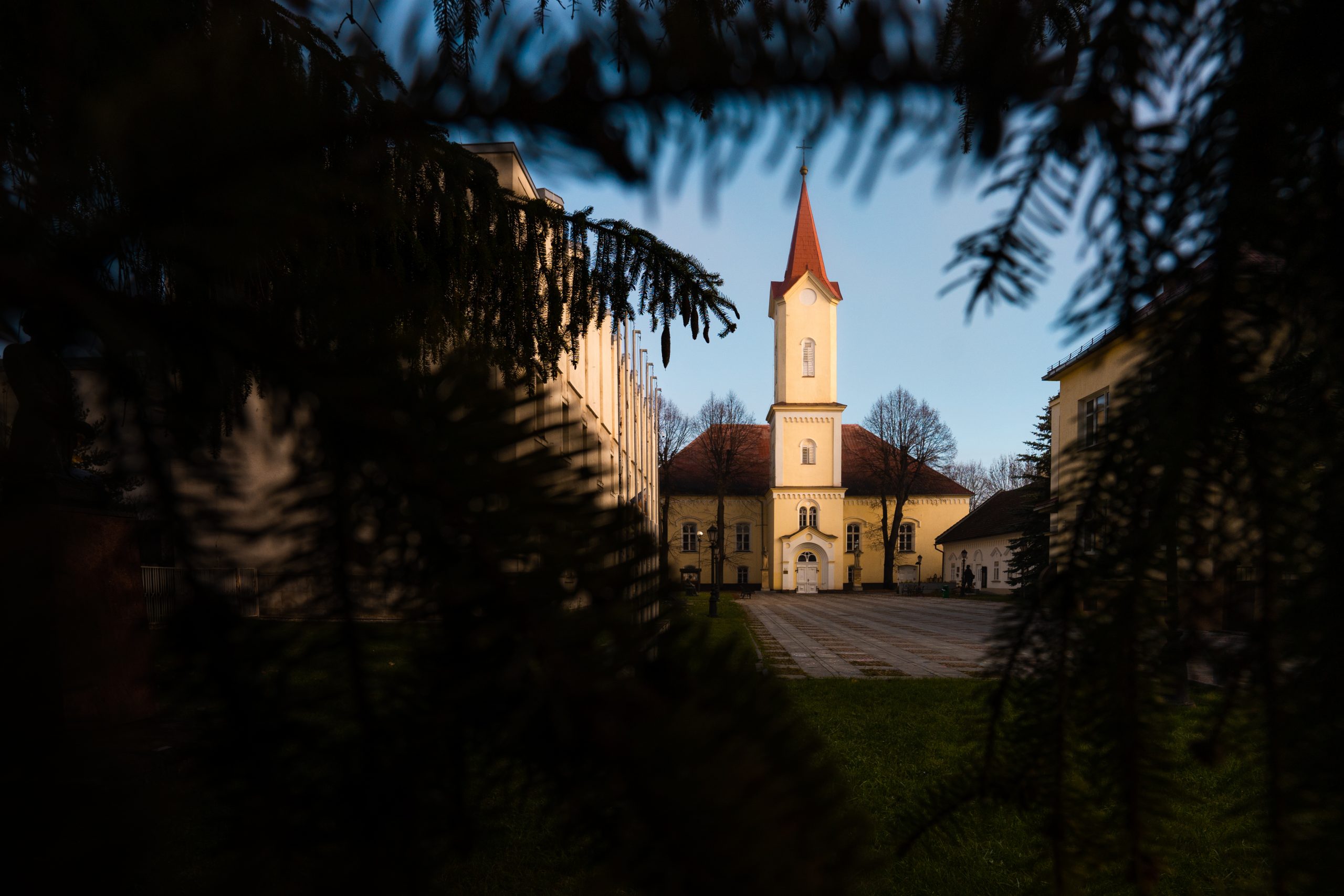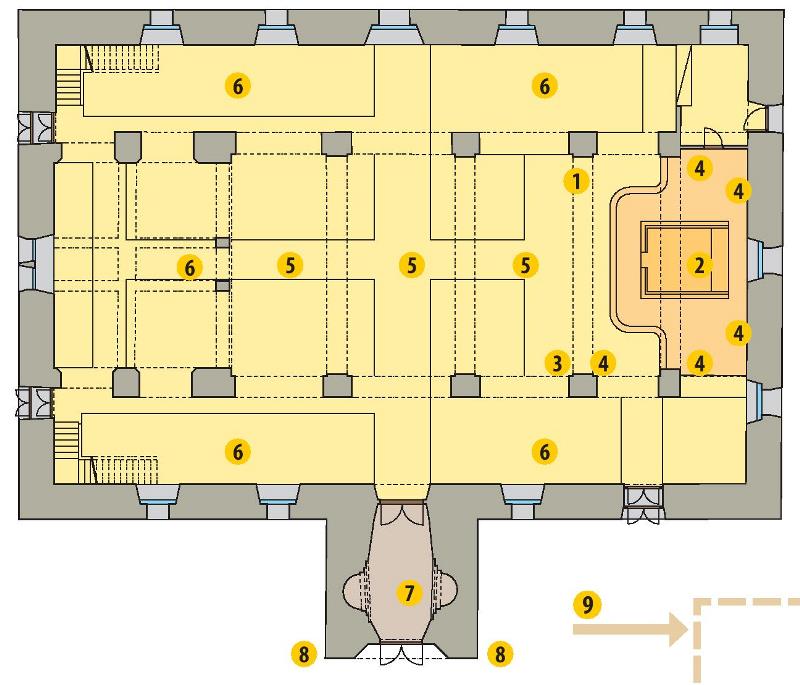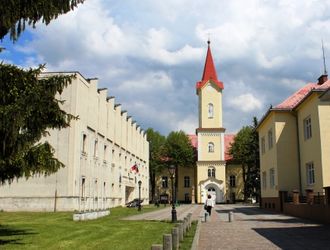The Lutheran church in Liptovský Mikuláš could be built only after the Edict of Tolerance had been promulgated by Joseph II in 1781, which enabled Lutherans to construct churches, however, only outside squares and without towers or bells. Lutherans of 13 towns and villages in the Liptov region helped build the church of Mikuláš in 1783-1785.
The simple classicistic building without a tower had served for almost hundred years when the town was hit by fire that damaged the attic and parish office. During the church renovation, walls were made higher and a massive tower was added to the southern wall to serve as the entrance. The three-nave vaulted space features big galleries over the side naves, which makes the temple one of the biggest Lutheran churches in Slovakia with 1,700 seats. The interior with a classicistic pulpit is dominated by a big late baroque altar with an extension and side sections. The precious organ on the western gallery dates back to 1892.
Get to know history and interesting details of precious interior of the Lutheran church via audio guides, photo galleries and short texts.
❶ The pulpit was donated to the church in 1806 by Emerich Pongrácz, a county governor from Liptov, and his wife. Their family coats of arms adorn the roof of the pulpit.
❷ Late Baroque altar (height 6.5 m) richly decorated with wood carving with gilded elements. On the sides of the image of the Crucified Christ are statues of the evangelists Matthew and John, above the coat of arms of the donor, is the figure of Archangel Michael with the devil under his feet and the symbol of God’s eye.
❸ Marble baptismal font from 1935 with a copper lid.
❹ Commemorative plaques dedicated to Juraj Janošek, M. M. Hodž, Juraj Tranovský, Vladimír Kun and the 500th anniversary of the Reformation.
❺ The original crystal chandeliers with a massive brass construction, which were too burdensome for the vault, replaced the new ones made of Slovak crystal.
❻ Triforium above the side aisles and on the west side (choir).
❼ A built-in tower with three bells and an entrance portal.
❽ Sandstone statues of Juraj Tranovský and M. M. Hodža.
❾ Old rectory with an exhibition of Tatrín and Requests of the Slovak Nation.
At the beginning of the 16th century, Martin Luther’s reformist ideas spread to the territory of Liptov. The population of St. Nicholas was addressed so much that almost all converted to the Evangelical faith. Even in the Church of St. Nicholas, that belonged to the Catholic Church, from the middle of the 16th century were only evangelical preachers; among them Juraj Tranovský, author of the first evangelical songbook Cithara sanctorum. When the church was returned to the Catholic Church in 1680, the Evangelicals went for a service to church in Paludza, 8 km away, for another hundred years. Since 1785, the Evangelical community has had its own church, which was built by believers in today’s historic part of town.
They renewed their St. Nicholas community in Vrbica and devoted themselves to active spiritual work, charity, education and culture. The rectory, the Evangelical school (now gallery), the Tranoscius publishing house and the church house were gradually added to the church. An evangelical district was formed here, which under the influence of M. M. Hodža became a place of historical events, such as the founding of the first national cultural association Tatrín and the compilation of the Requests of the Slovak Nation – the first political program of Slovaks. In 1922, Juraj Janoška was ordained here the first bishop general of the Evangelical Church, and St. Nicholas became the bishop’s residence.
You can learn more about Liptovský Mikuláš on the Liptovský Mikuláš website.




Please describe your experience